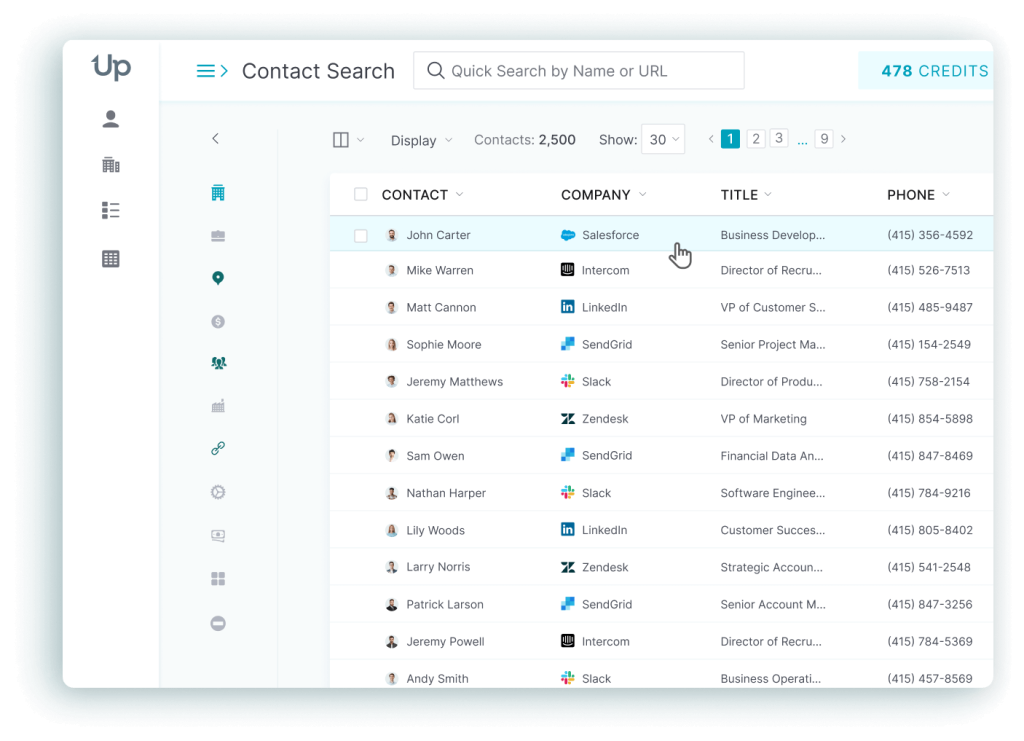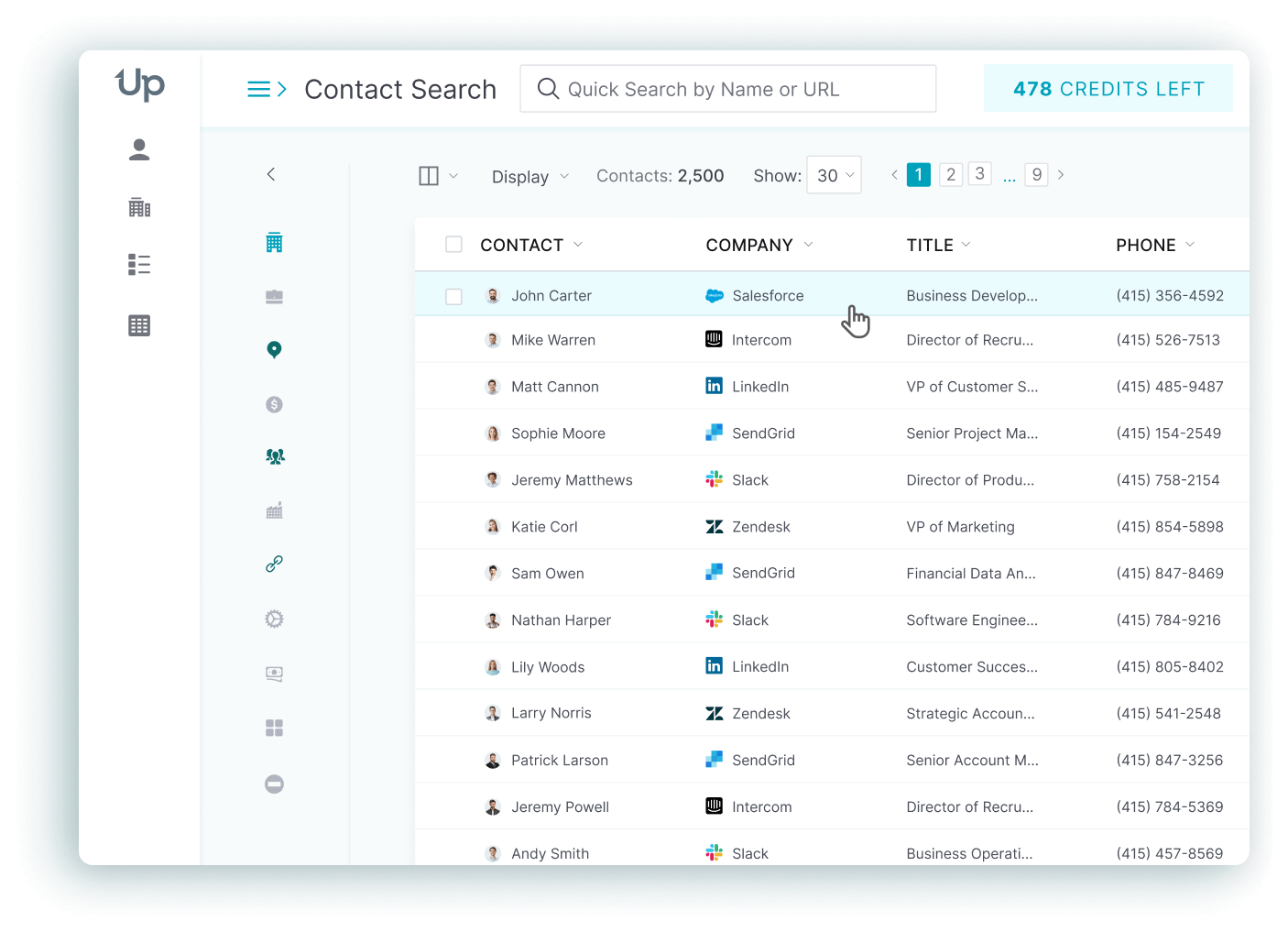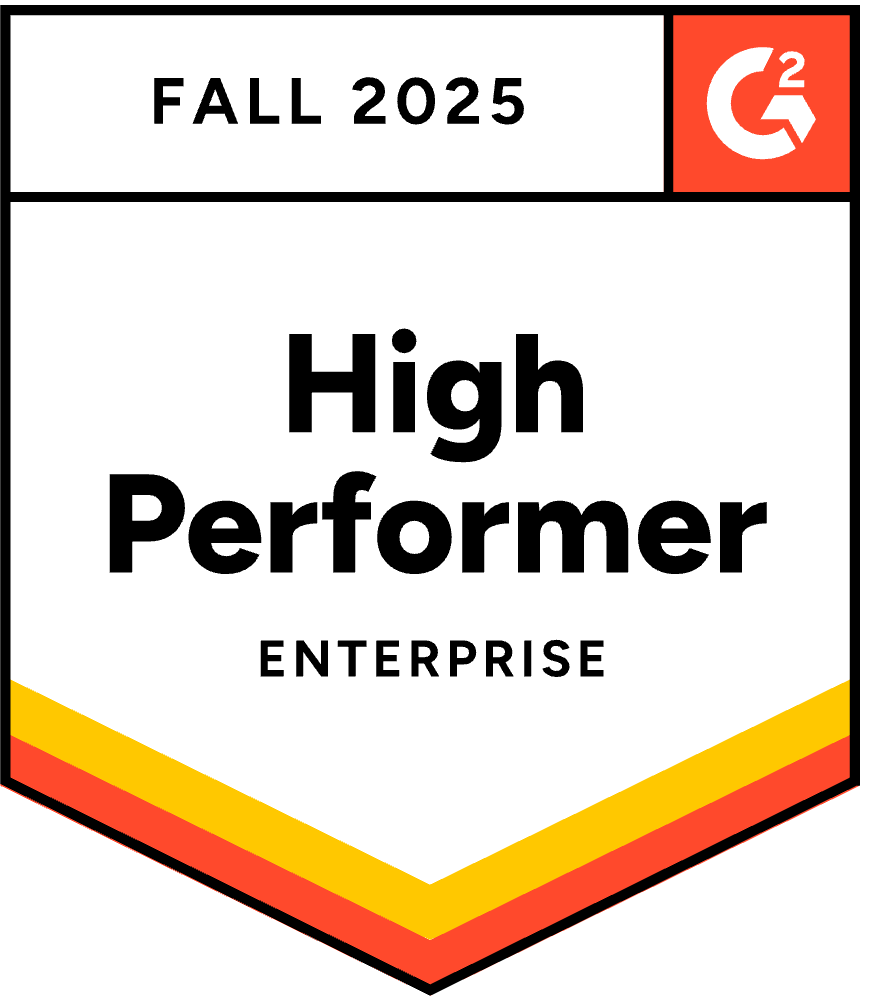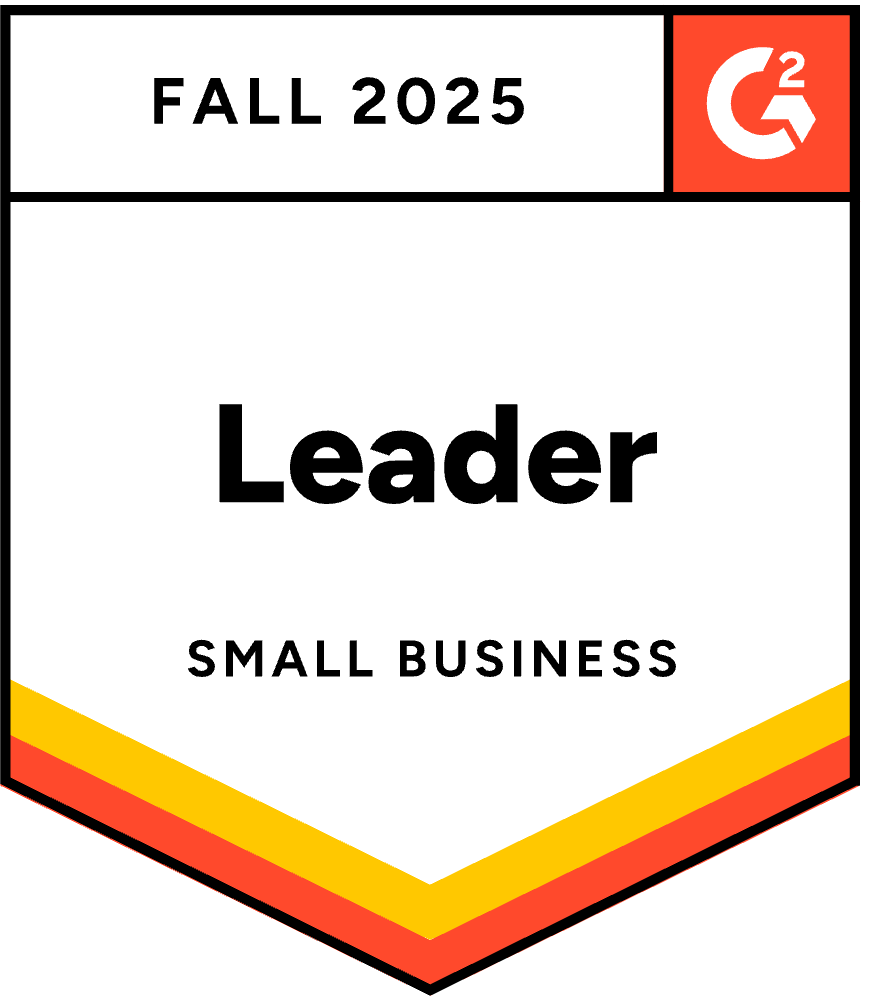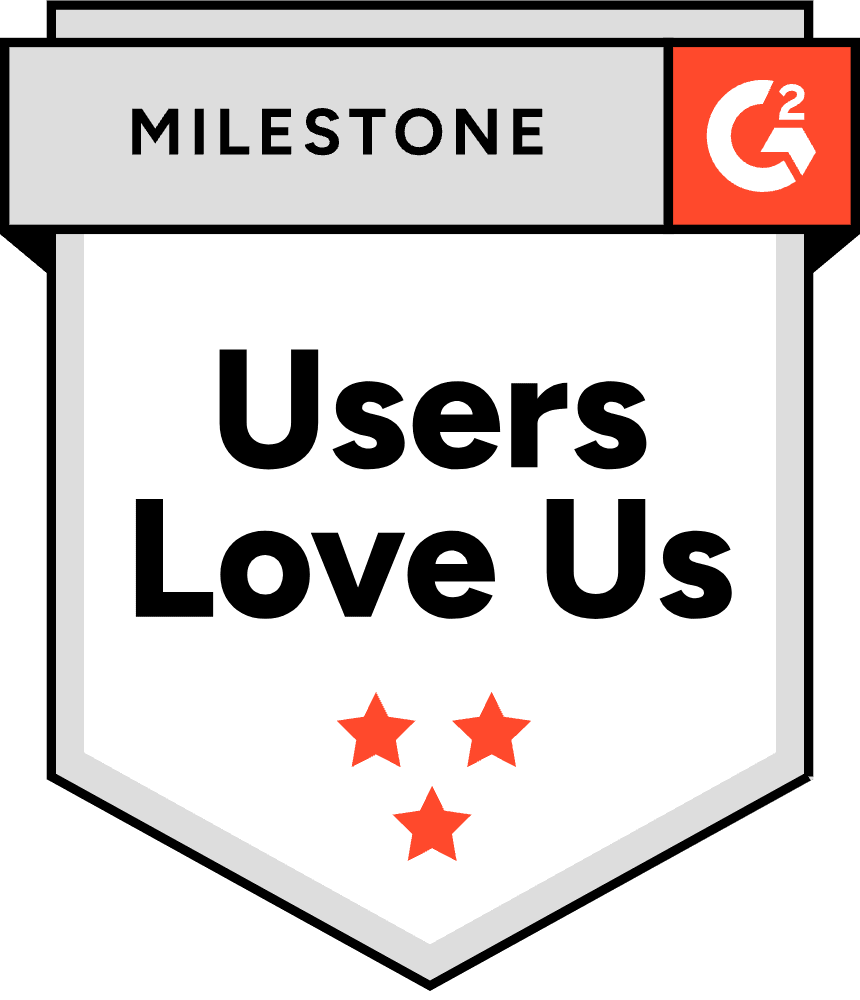In addition to building a sales team, having an effective tech stack is crucial to fully optimizing your sales process. Without a solid tech stack in place, your team will work much less efficiently, miss certain opportunities, and have poor communication.
So, how can you support and optimize your sales team with today’s tech? This guide covers how to build a high-quality sales tech stack along with some of the tools you can incorporate in your stack.
What is a Sales Tech Stack?
A sales tech stack is the collection of different sales tools and software that your company uses to manage and centralize your sales activities. It helps your team organize and track the entire sales cycle, from initial customer outreach to closing a deal.
These tools work together to streamline the sales process, and it’s essential for businesses to have a fully-integrated sales tech stack. Without these tools in place, your sales team would have to handle many additional duties manually and work with much less data and information at their disposal.
Benefits of a Fully Integrated Sales Stack
Here are a few of the biggest benefits of having a sales tech stack in place:
- Cost savings – A solid tech stack can minimize costs by optimizing resource allocation, reducing errors and redundancies, and ensuring you only pay for features or technology you actually need.
- Better efficiency – Your sales process will be much more efficient with a tech stack, as the tools often work together seamlessly. This reduces how much time your team needs to spend on manual work throughout the sales process. Essentially, you can achieve the same results with less effort and fewer resources.
- Improved communication – By having everything integrated into a single tech stack, you ensure that all communication is consistent across different teams, channels, and projects, to reduce the chances of things getting missed or misunderstood.
- Streamlined processes – An integrated tech stack can simplify or streamline your processes by removing time-consuming bottlenecks.When tools work together in a tech stack, they can share information, unify data, and automate tedious tasks.
- Data-driven decisions – Many common tools in tech stacks provide actionable data that your team can use to make more informed decisions, taking the guesswork out of your sales workflowk.
How to Build a Sales Tech Stack
Now that you’re aware of what a sales tech stack is and the benefits of having one, how do you build one? Well, thankfully, the process is quite simple.
- Know your current and future needs – The first step is to understand the type of tools your sales team needs not only today, but in the future. Consider the size of your business, the industry you’re in, your audience, and what you hope to gain out of your tech stack.
- Understand your current sales process – Next, take a close and honest look at your current process. Identify your team’s pain points, strengths, and any areas that could be optimized or automated. This helps you hone in on what tools to include in the tech stack.
- Take a close look at the tools you’re using now – If your sales team uses any software currently, take time to decide whether they’re worth keeping as you adopt your new sales tech stack, or whether they should be replaced by something more suitable.
- Be aware of the features you need – When evaluating your options for tools, make sure the software you choose offers the features you need. You don’t want to bloat your sales tech stack with functionalities your team will never use, so target tools that selectively address the issues you identified in Step 2.
- Have an implementation plan – Once you’ve decided on the software you want in your tech stack, create a roadmap for implementation. Think about how long different tools will take to set up and integrate into your stack, and work out a plan—with your team’s input—to get things operating without any hiccups.
- Train your team – Of course, once the sales tech stack is ready, it’s important to train your team on how it works. Some tools are complicated, and to ensure your team can properly use new tools, take time to educate them on how to use certain functions, how the tools work together, and other considerations for everyday use.
Tools & Software to Include in Your Sales Tech Stack
There are several types of business development tools to include in your sales tech stack for it to be as effective as possible. Let’s take a closer look at 10 types of tools you need to have in your stack, as well as some of the best options to consider.
1. Prospecting & Lead Generation
Prospecting and lead generation tools help your team to identify, engage with, and convert potential customers. They also assist in generating interest in your product and often help you zero in on prospects who are most likely to convert, so you can focus your outreach on the right people or organizations.
Our Pick: UpLead

UpLead is one of the best B2B data providers and prospecting tools, as it has a massive database of over 160 million contacts and 16 million companies. It’s particularly great for outbound prospecting as it has a 95% accuracy guarantee, to ensure you don’t waste time reaching out to invalid or outdated numbers or email addresses. It also verifies emails in real time.
UpLead offers depth and breadth: You can choose from over 50 search filters to browse through its exhaustive database, and you can perform a bulk lookup to find data points for thousands of leads at once.
The tool also provides invaluable intent data, which helps connect you with prospects who are ready to buy and are actively looking for the solution you offer. It also syncs directly with your CRM to enrich data, ensuring your information never becomes stale.
Alternative choices include:
- Uniqode’s Digital Business Card
- Seamless.AI
- Cognism
- Lusha
2. Sales CRM
Our Pick: Pipedrive

A sales customer relationship management (CRM) tool is one of the most important sales productivity tools you can have. This helps you manage and organize several core areas of sales, like customer data and interactions. CRM tools can also help with lead scoring, automating tasks, and enhancing your marketing efforts.
Our pick for the best sales CRM is Pipedrive. It’s an adaptable and customizable platform that optimizes your sales process by helping you easily manage leads, centralize your data, schedule calls, and more. It also integrates with hundreds of the most popular sales apps and tools.
The tool also functions as customer profiling software, as it helps you gather information about target customers and organize them into specific categories. You can also use it to forecast revenue, monitor performance, and sell on the go with its mobile apps.
Pipedrive also scales with your growth and provides a host of AI-powered features to enhance your sales. This includes AI tips, automated prompts and sales conversations, and real-time performance insights. These automations help cut your admin time dramatically, allowing you to focus on what ultimately matters: making sales.
Some alternative choices are:
- Copper
- Hubspot
- Monday
- Salesforce
3. Sales Dialer
If reaching out to leads over the phone is one of your chosen prospecting techniques, having a sales dialer in your stack is a great call. These tools automate the process of making outbound calls for your team and speed up your outreach.
Our Pick: Cloudtalk
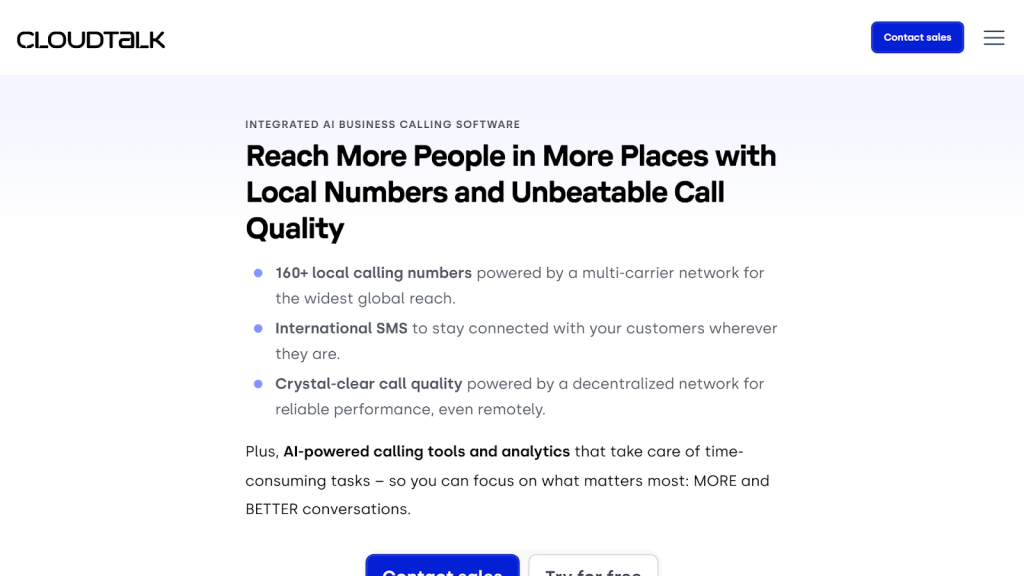
Cloudtalk is an AI call center software that streamlines your outreach calls by automatically dialing through your list of numbers, tracking your campaigns, and helping you access numbers in over 100 countries.
It also offers clear call quality and harnesses the power of AI to provide insights like trending topics, talk ratios, call sentiment, key call points, and more. The tool also lets you create and leave pre-recorded voicemails, and has a click-to-call feature to call any number on the web in a single click.
Cloudtalk also provides international SMS for another way to stay in contact with your prospects and customers, and it has a user-friendly visual designer to easily set up call routes in minutes. Best of all, it integrates seamlessly with your CRM and supports a variety of industries, including financial services, software, tech, education, and more.
Other sales dialers to consider are:
- Dialpad
- Nextiva
- RingCentral
4. Sales Analytics and Forecasting
A sales analytics and forecasting tool helps you gather important sales data, examine it, gain insights, and use this information to make important data-driven decisions about future sales performance.
Our Pick: Clari

Clari is a useful revenue platform that helps you with all aspects of your current and future revenue. It helps you manage your pipeline, boost sales productivity, retain customers, identify risks and opportunities, and so much more.
It has several features and products that it offers, including some specifically designed to improve your sales analytics and forecasting.
The Clari Analyze feature includes charts, visualizations, and dashboards that give complete visibility of your revenue. It lays everything out clearly and helps you track changes, view trends, and create reports.
The Clari Forecast feature offers real-time AI insights and combines them with past data for optimal forecasting accuracy. It’s also capable of predicting revenue for every revenue model, no matter how complex it may be. This includes scenario modelling, which helps to explore a range of possibilities instead of just predicting a single outcome.
Some alternatives to consider are:
- Avoma
- Copper
- Zoho
- Gong
5. Sales Enablement
Sales enablement software provides your sales team with the content, tools, training, coaching, and resources that they need to communicate with current and potential customers as effectively as possible.
Our Pick: Highspot
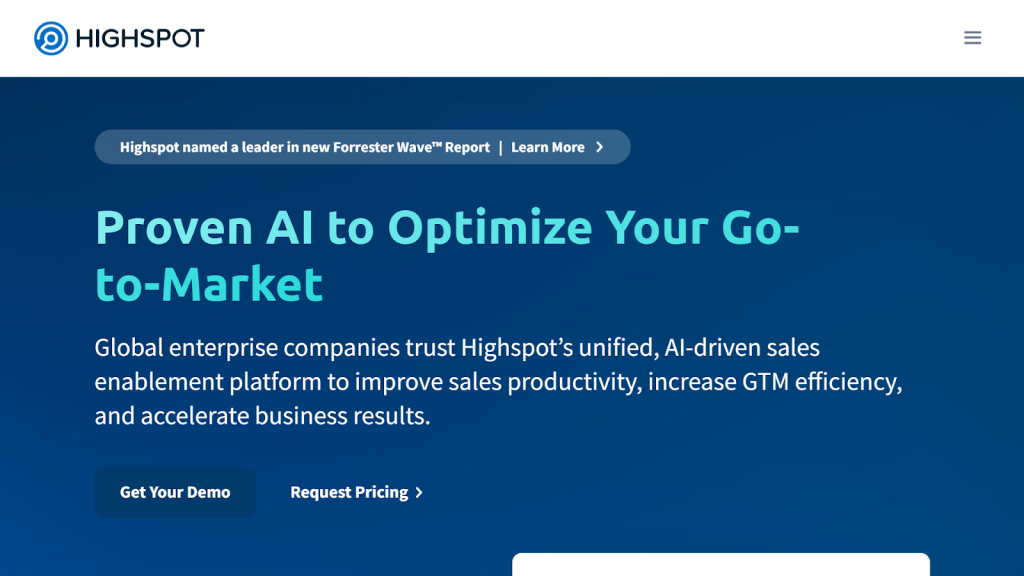
Highspot is a unified sales enablement solution that provides everything you need to help your sales team reach new heights. It helps you manage and organize sales content and resources, offers AI-powered search results and answers from your content library, and even captures real-time buyer metrics and activity.
The tool also helps you build a comprehensive onboarding and training program for your team, including the option to build custom courses and lessons to ensure you can teach your team exactly what you want.
Highspot supports sales coaching, as it lets your team prepare for sales calls with AI conversation intelligence, coaching tools, and skill feedback. This enables your team to not only practice sales calls but also build and hone the underlying skills for their role.
Here are a few sales enablement alternatives:
- Seismic
- Salesloft
- Outreach
6. Sales Operations
A sales operations tool is all about improving your sales processes and optimizing the day-to-day tasks of your sales team to ensure they can do their best work. The software aims to streamline workflows, use automation to eliminate tedious manual tasks, and dramatically boost your team’s productivity.
Our Pick: LeanData
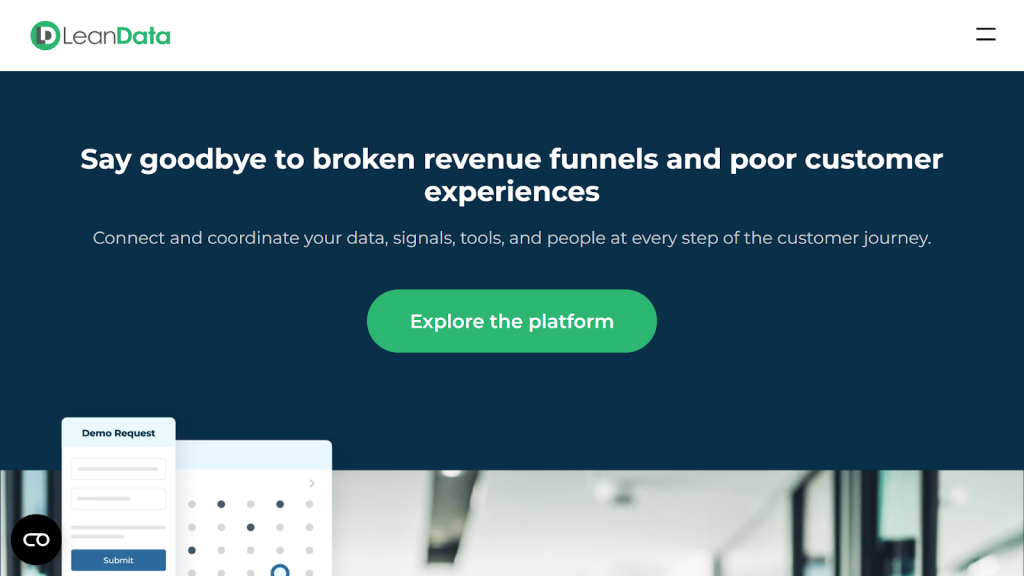
LeanData is a versatile platform that offers a variety of features that improve your sales operations efforts. It can help you automate workflows throughout the revenue cycle, boost rep productivity and efficiency, and reduce the need for your sales team to focus on time-consuming manual work that isn’t related to selling.
The tool also helps you align both your people and processes to ensure your sales team can reach its desired outcomes with minimal friction,. In effect, you can easily move qualified leads from your marketing team to your sales team to your customer success team.
It also helps you automate sales follow-ups, cuts your response times, lets you gain solid visibility of your entire process to ensure there are no bottlenecks, and even streamlines the process of onboarding new customers.
Some sales operations alternative tools include:
- RingLead
- Chili Piper
- Traction Complete
7. Outreach
Outreach software helps to automate, streamline, and improve your outreach efforts. Businesses use them to help generate leads, find buyer-ready prospects, connect with prospects, send personalized messages, manage contacts, and more.
Our Pick: Lemlist

If your team uses outreach marketing to generate leads and find prospects, Lemlist is a top tool to consider. It helps you build lead lists that feature verified emails and phone numbers, and it automates the process of writing and personalizing your outreach emails. The tool features a large database to pull data from as well as a browser extension to gather data from the web.
Lemlist helps you stay out of the spam folder when reaching out to prospects, create multichannel campaigns to always engage with leads on their preferred platform, and identify companies that have visited your website before.
It integrates seamlessly with many CRMs and tools, and it contains several useful templates (for emails, DM, and even calls) to help you boost your response rate. This not only increases your positive results but also saves you a ton of work when you’re tasked with generating hundreds—or thousands—of emails.
Other outreach tools to consider are:
- Smartreach.io
- Apollo.io
- Instantly
- Reply
8. Demos & Communication
This type of software helps you demonstrate your product or service to potential customers with a virtual walkthrough. Many of these tools also help improve your communication efforts with customers.
Our Pick: Zoom
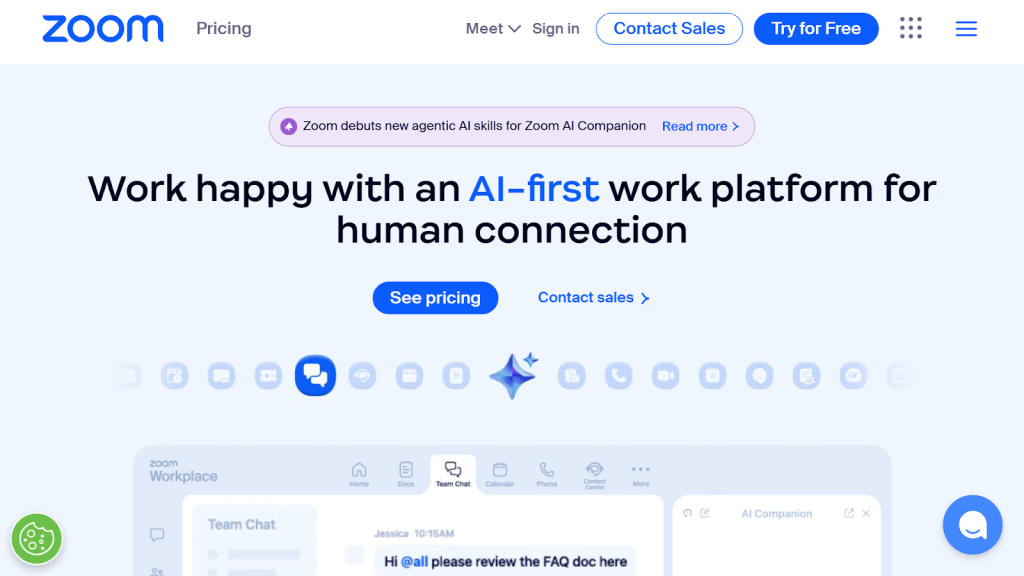
Zoom is a popular communication tool that helps deliver personalized customer care, speed up contact resolution, and uses AI to provide coaching insights from each and every tailored interaction. You can also use it to deliver intelligent self-service to help your customers find their own answers, quickly and easily.
The platform is also great for demonstrating your product or service, as you can host events, such as virtual walkthroughs, and share your screen to guide potential customers through any process. You can also host larger webinars and showcases to highlight the value of your product or service to a wide audience.
Zoom even offers real-time translations if you’re demonstrating your product to an international audience. It also has several other sales-specific features, such as being able to set alerts on how deals are progressing and using analytics to identify sales improvement opportunities.
In addition to using Zoom to communicate with customers and demo products, it’s also valuable for internal communication within and across your teams.
Some alternative communication tools to consider are:
- Microsoft Teams
- Google Meet
9. Calendar Scheduling
A calendar scheduling tool is instrumental in helping you schedule appointments and manage meetings automatically. These tools often rely on automation to streamline the booking process, which frees up employees’ time from performing rote tasks.
Our Pick: Calendly
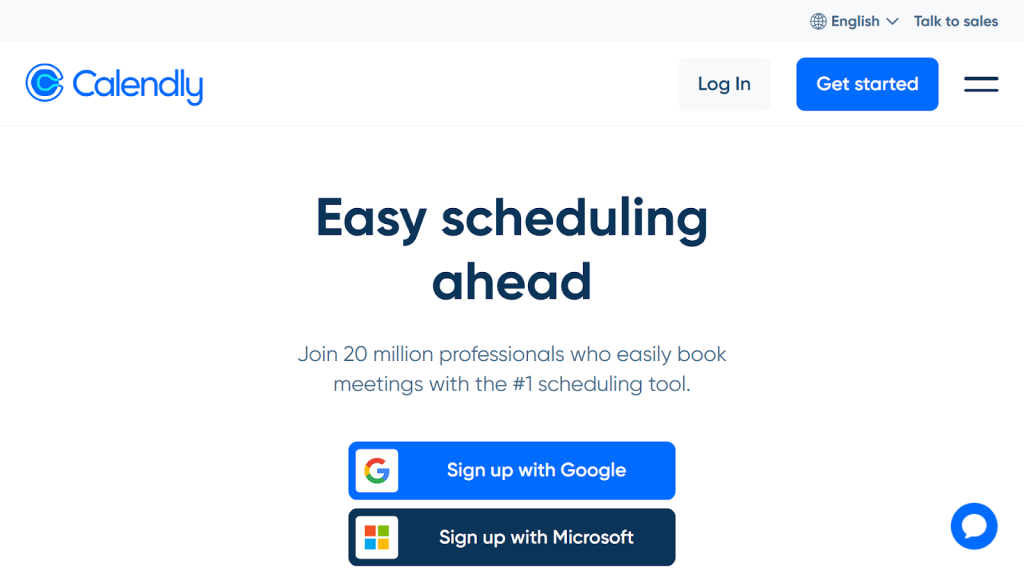
Calendly is a tool that simplifies the process of scheduling appointments for your organization. It syncs and connects multiple calendars, lets you fully customize your availability, and even lets you send automated reminders and thank-you messages before and after meetings.
It also lets you create customized booking pages and a shareable scheduling link that you can add to emails or on your website. This saves a ton of time and effort, and it lets interested leads and prospects book meetings immediately, eliminating needless back-and-forth communication just to set up a meeting.
Calendly integrates with more than 100 different apps and tools, including CRMs, video conferencing tools, analytics platforms, and sales software. It also has a free version, which is one of the best free sales tools on the market, though many professionals and teams will need one of the paid plans.
Here are a few potential alternatives:
- Setmore
- Square Appointments
- SimplyBook
10. Contract and Order Management
Contract management software helps you streamline and automate the entire contract process, from creating the contract, editing it, getting it signed, and even managing it going forward. These tools also reduce the chances of human errors and mitigate risk in general.
Our Pick: Signaturely

For managing contracts successfully, our choice is Signaturely. It’s an incredibly simple and streamlined platform that lets you upload documents, send them electronically, and get them signed instantly.
You can either upload a contract you wrote previously or use one of its intuitive templates to create one from scratch. You can use the templates after revision or customization, iteratively, to save even more time in the future.
Once the contract is in the hands of signers, the platform effortlessly guides them through the contract, ensuring all fields are properly completed. If they’re slow to sign the contract in the first place, Signaturely sends an automatic reminder.
All signatures through Signaturely are legally binding, and the platform lets you digitally store all of your contracts in one place for ease of reference and longevity.
Some alternatives to consider include:
- Service Provider Pro
- DocuSign
- PandaDoc
- Agiloft
11. Digital Sales Rooms
Digital sales rooms are collaborative online workspaces that centralize everything a buyer needs during the deal cycle. Instead of long email threads and scattered attachments, sales reps can share proposals, security documents, mutual action plans, and quotes in one branded hub. These rooms make it easier for buyer champions to sell internally while giving sales teams visibility into stakeholder engagement.
Our Pick: Dock
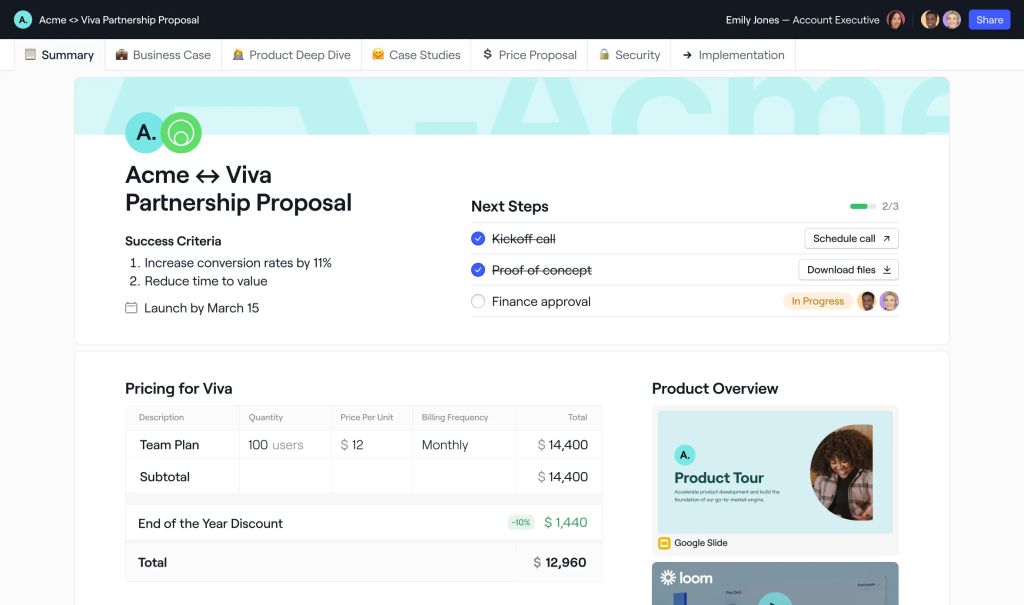
Dock is a flexible revenue enablement platform that helps sales teams close deals faster and improve the buying experience.
Reps can launch personalized deal rooms in minutes, embed demos, timelines, and price quotes, and guide buyers with mutual action plans. Every interaction is trackable, so sellers know which decision-makers are engaged and how deals are progressing.
They’ve also recently built in AI functionality that lets reps auto-generate business cases, executive summaries, action plans, and more based on CRM data and call transcripts.
Dock also transitions seamlessly into onboarding workspaces and client portals, so the same link supports the full customer lifecycle.
Other sales rooms to consider are:
- DealHub
- GetAccept
- Accord
Key Considerations for Building a Sales Tech Stack
When you’re building a new sales tech stack, there are several key points to keep in mind.
Main Goals For Your Sales Tech Stack
First and foremost, you need to ensure that your sales tech stack matches up well with your goals for it. Not all tech stacks are created equally, and different businesses may want different features for their stack.
For example, a company looking to improve customer experience and satisfaction with its stack may use different sales tools than a company looking to rectify problems like inefficient processes or lackluster sales numbers.
Current Tools
Next, evaluate the sales intelligence tools you’re currently using. Decide whether or not you’d like them to be a part of your stack going forward. If you don’t want to keep them, make notes of what features or components you don’t like about them, so you can avoid choosing similar sales tools in the future.
However, if you decide to keep some of them, ensure you choose new tools that work well with your existing stack. This ensures the adoption and implementation processes are as simple and streamlined as possible.
Integration Capabilities
For a tech stack to operate at its best, all the tools need to integrate well with one another. This ensures that workflows may be streamlined, errors are kept to a minimum, and manual data entry and other tedious tasks can be reduced.
Evaluate the various integrations of a tool and whether it works well with other tools you’re considering. The last thing you want is to create a stack where the software doesn’t play nicely with one another, causing more headaches and work for your team.
Ease of Use & Implementation
Choose tools for your stack that are easy to use. This keeps mistakes and confusion to a minimum and ensures your team works more efficiently from the start.
In addition to the tool’s ease-of-use, it should also be relatively simple to implement. A complicated implementation can waste a lot of time, money, and team morale.
Scalability
As your company grows or your needs change, you want your tech stack to be able to keep up and scale with you. If the solutions you choose aren’t scalable, you may have to start over from scratch, which takes a lot of time, money, and effort.
While many tools are scalable enough to support your business even as it grows, this isn’t always the case. Make sure you’re aware of whether a chosen tool can support you as your needs and priorities change over time.
UpLead is the Secret Weapon for Any B2B Sales Tech Stack
With its 95% data accuracy and a massive database, UpLead is a superstar in your B2B sales tech stack. It verifies emails on the spot, helps you identify and reach out to targeted leads, and offers valuable intent data.
The tool also provides dozens of useful search filters, a bulk lookup feature, and automatically enriches the data in your CRM in real-time.
If you want to try UpLead for yourself and see if it’s right for your tech stack, don’t hesitate to try out the free trial.
FAQs About a Sales Technology Stack
Here are a few common questions about sales tech stacks, as well as their answers.
What is a stack in sales?
A stack in sales is a collection of tools that the sales team uses to organize, manage, and streamline its processes.
What is sales tech?
Sales tech is an overarching term that refers to all the software and technology that sales teams may use to improve their efforts. Some examples of sales tech include CRMs, data providers, scheduling and calendar apps, forecasting software, and outreach.
What does the tech stack stand for?
The term tech stack stands for technology stack and refers to the tools and software that a company or team uses to build a product, website, or other digital solution.
Is Salesforce a tech stack?
No, Salesforce itself isn’t a tech stack. However, it’s a piece of software that may be added as a component of your tech stack.
What You Need to Remember About Building a Sales Tech Stack
When building a tech stack, it’s incredibly important to know your current and future needs, and be able to determine the exact features and functionality you want from the tools. Also, make sure to have a plan for implementation and training, so the adoption process goes as smoothly as possible.

